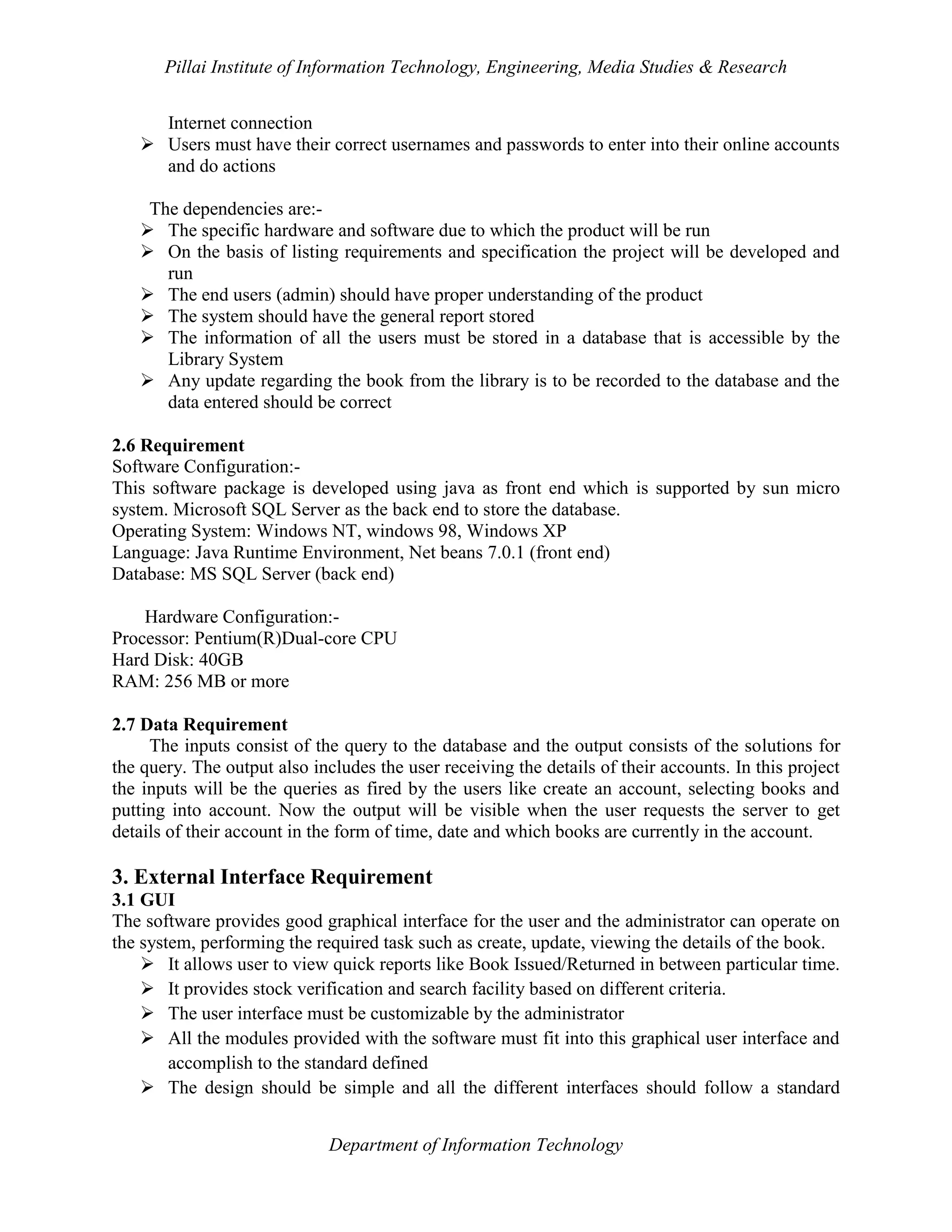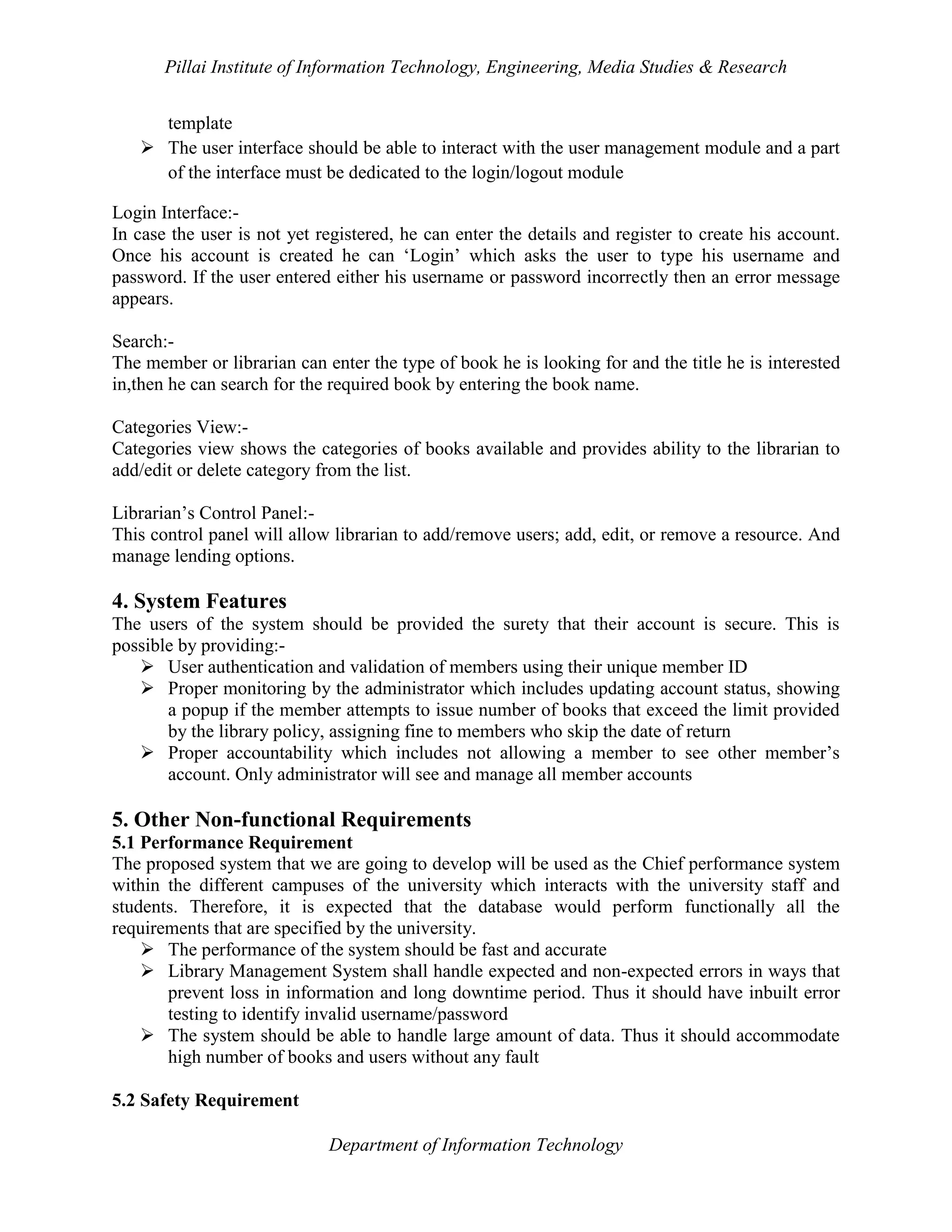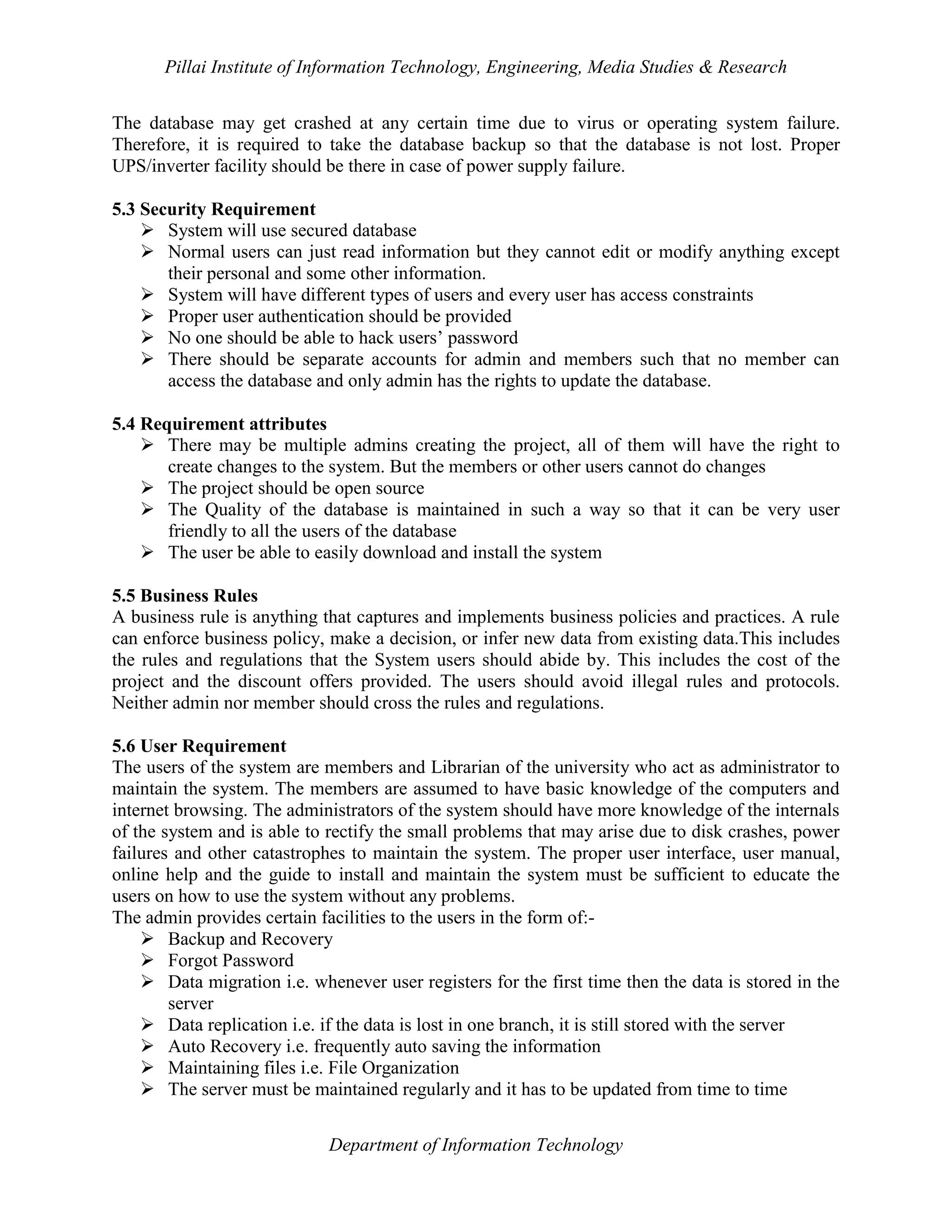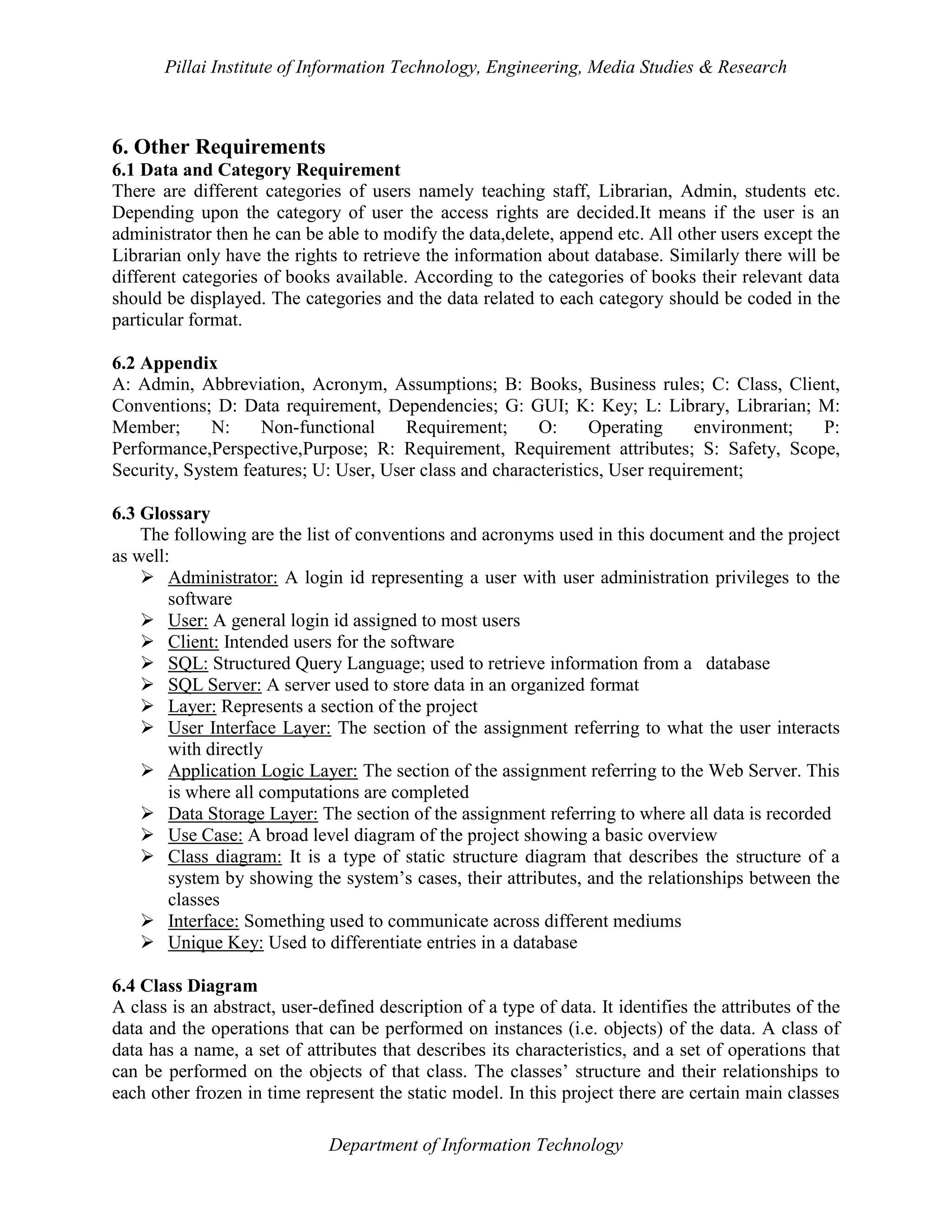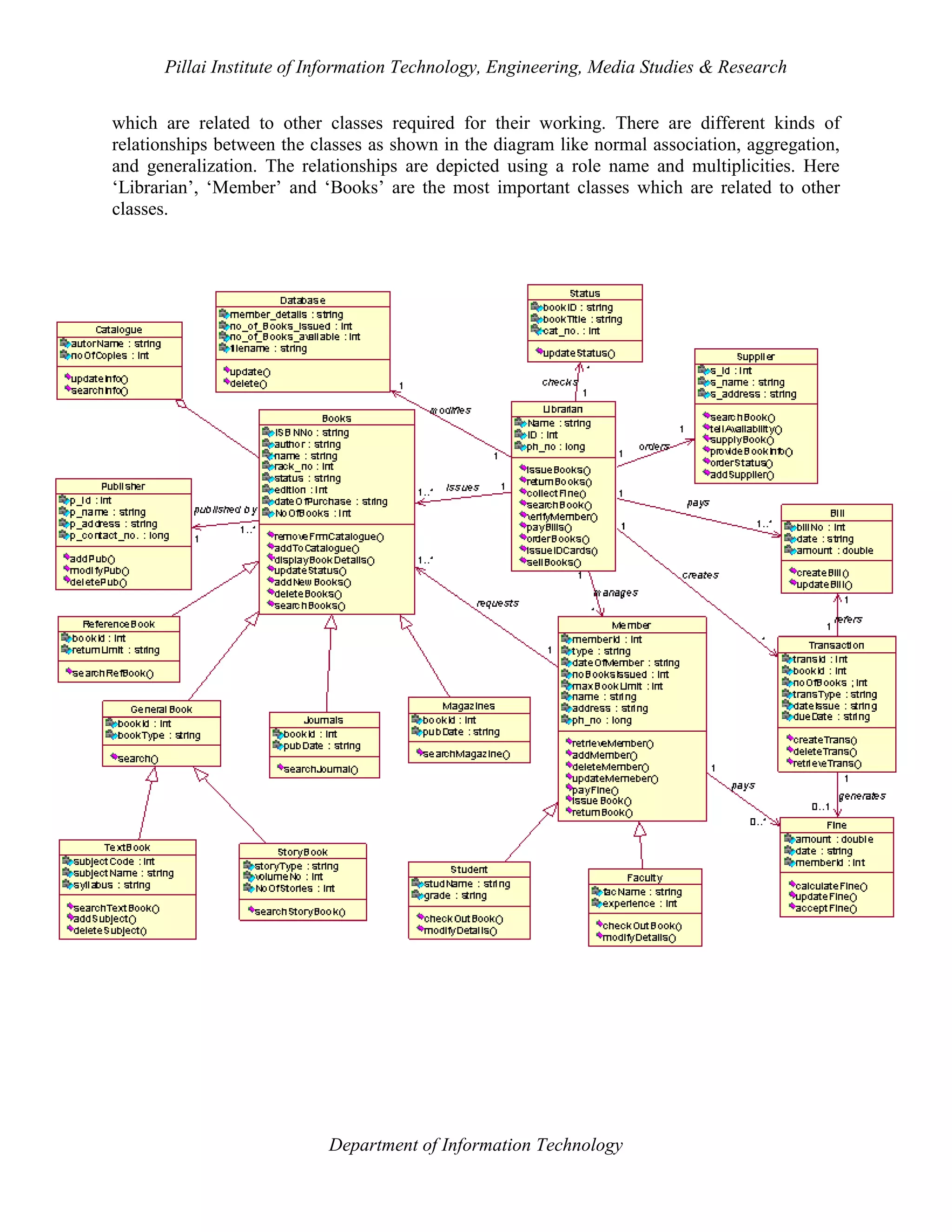The document provides requirements for a Library Management System. It includes 3 or less sentences:
The Library Management System aims to computerize library processes like book borrowing and maintain member and book details in a database. It will allow librarians and members to search for books, view member accounts, and generate reports. The system needs to be secure, fast, and compatible with common browsers and operating systems.
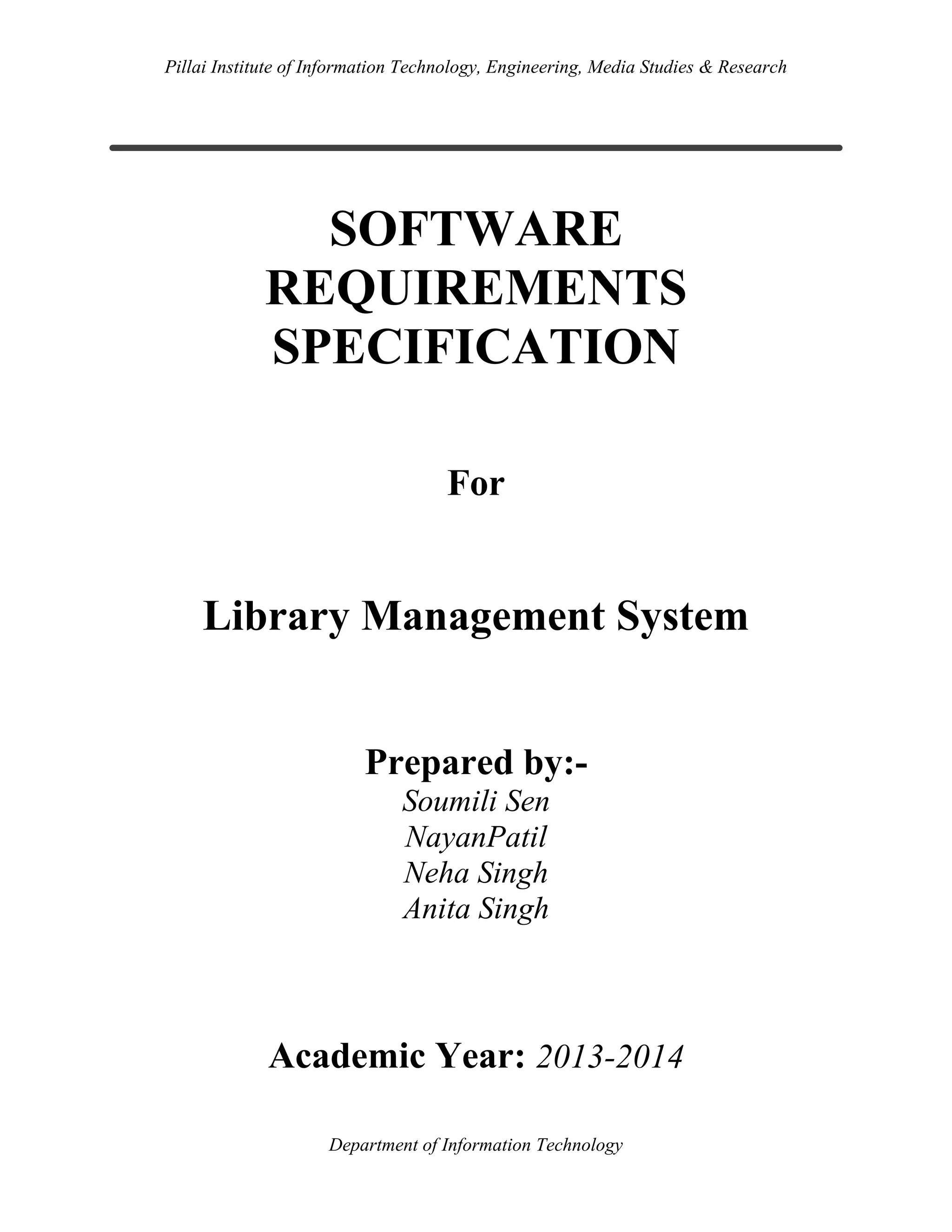

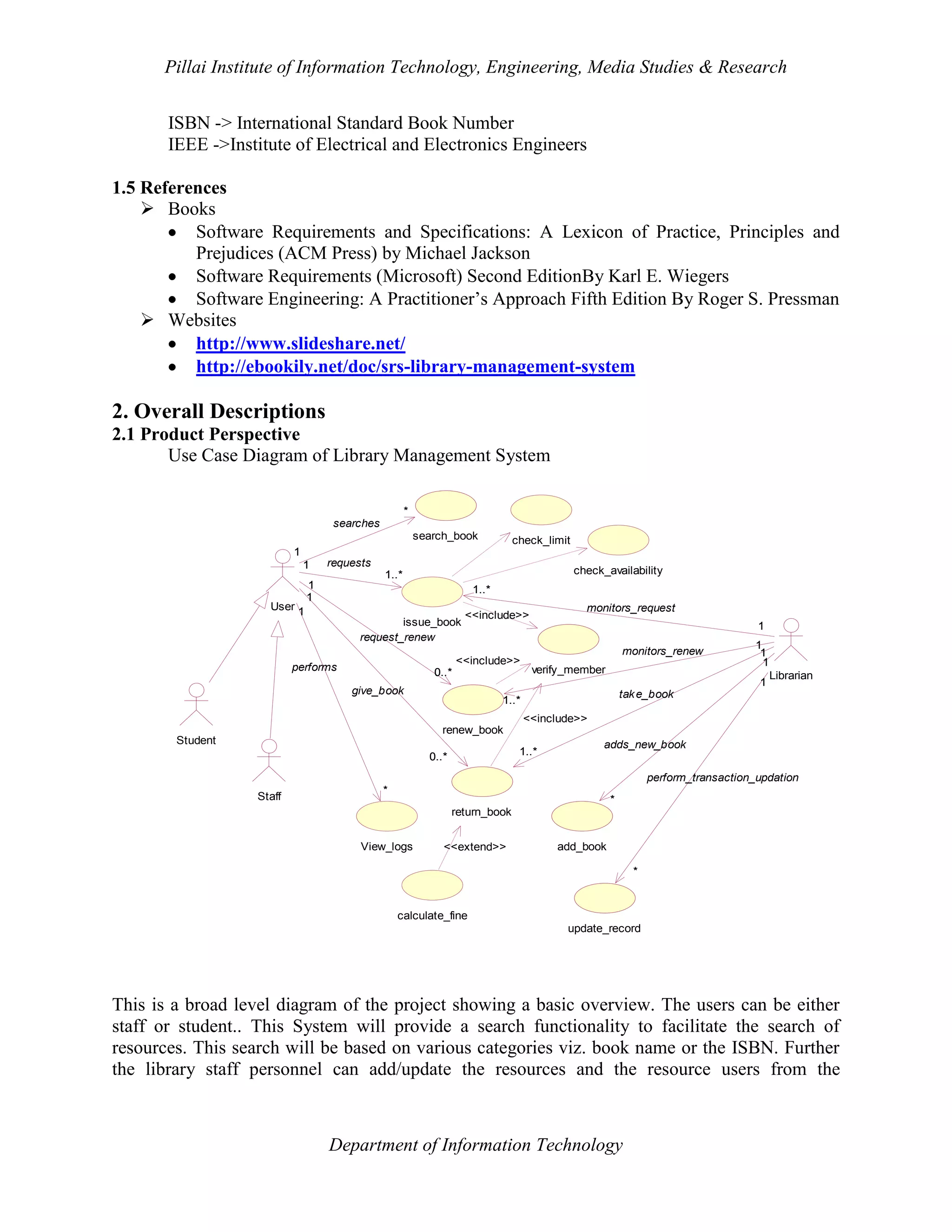
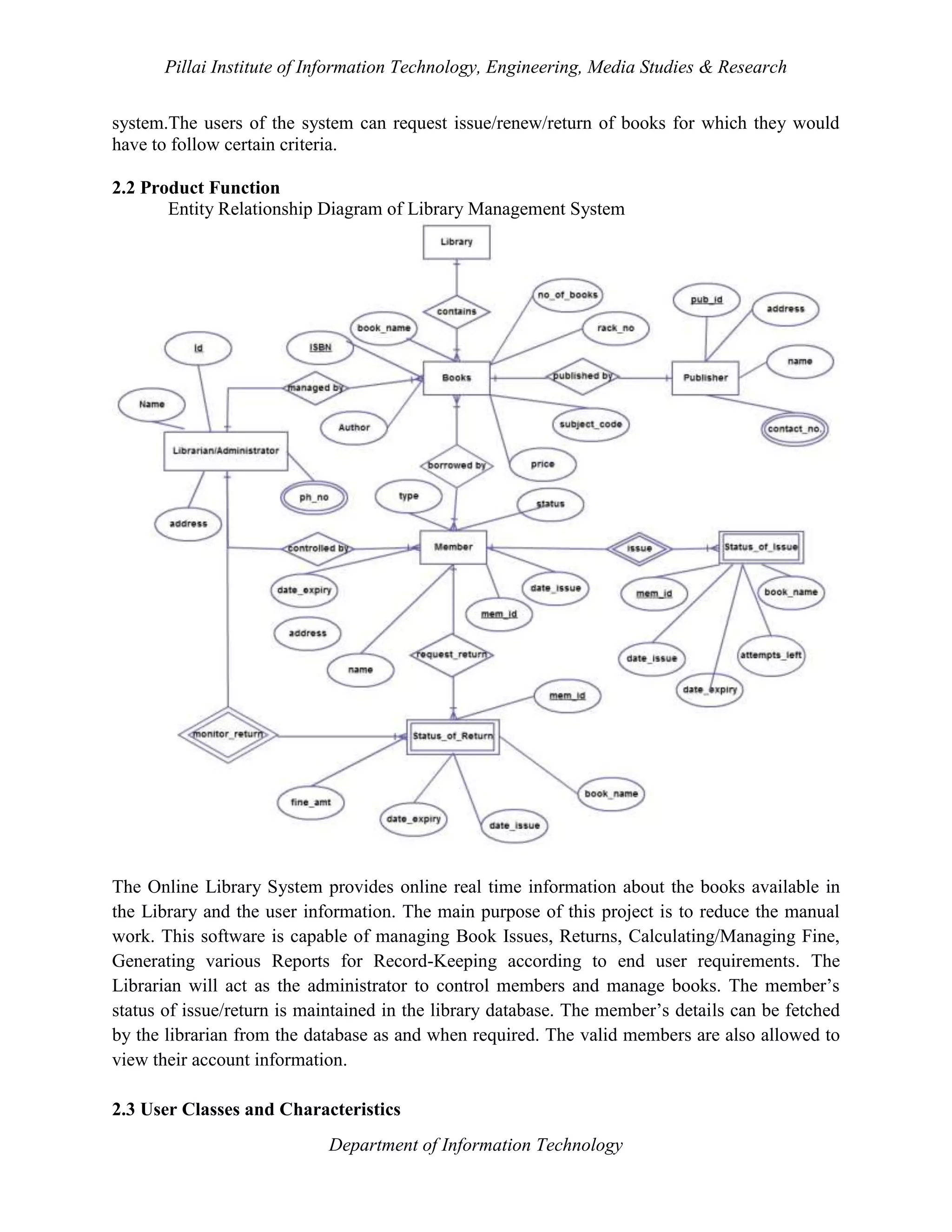
![Pillai Institute of Information Technology, Engineering, Media Studies & Research
The system provides different types of services based on the type of users
[Member/Librarian]. The Librarian will be acting as the controller and he will have all the
privileges of an administrator. The member can be either a student or staff of the university who
will be accessing the Library online.
The features that are available to the Librarian are: A librarian can issue a book to the member.
Can view the different categories of books available in the Library
Can view the List of books available in each category
Can take the book returned from students
Add books and their information to the database
Edit the information of existing books
Can check the report of the existing books
Can check the report of the issued books
Can access all the accounts of the students
The features that are available to the Members are: Can view the different categories of books available in the Library
Can view the List of books available in each category
Can own an account in the library.
Can view the books issued to him
Can put a request for a new book
Can view the history of books issued to him previously
Can search for a particular book
2.4 Operating Environment
The product will be operating in windows environment. The Library Management System is a
website and shall operate in all famous browsers, for a model we are taking Microsoft Internet
Explorer,Google Chrome,and Mozilla Firefox.Also it will be compatible with the IE 6.0. Most
of the features will be compatible with the Mozilla Firefox & Opera 7.0 or higher version. The
only requirement to use this online product would be the internet connection.
The hardware configuration include Hard Disk: 40 GB, Monitor: 15” Color monitor, Keyboard:
122 keys. The basic input devices required are keyboard, mouse and output devices are monitor,
printer etc.
2.5 Assumptions and Dependencies
The assumptions are: The coding should be error free
The system should be user-friendly so that it is easy to use for the users
The information of all users, books and libraries must be stored in a database that is
accessible by the website
The system should have more storage capacity and provide fast access to the database
The system should provide search facility and support quick transactions
The Library System is running 24 hours a day
Users may access from any computer that has Internet browsing capabilities and an
Department of Information Technology](https://image.slidesharecdn.com/softwarerequirementsspecificationlms-140218113229-phpapp01/75/Software-requirements-specification-of-Library-Management-System-5-2048.jpg)
